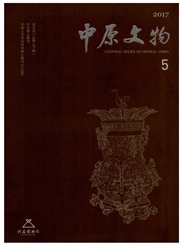
欢迎您!东篱公司
退出

 中文摘要:
中文摘要:
本文采用植物考古方法,系统研究了南洼遗址二里头、殷墟、春秋及汉代土样中浮选到的炭化粟、黍、稻、小麦、大豆、藜科等农作物和一些杂草的种子以及少量果核残块。结果表明南洼遗址从二里头文化到汉代延续了中国北方的旱作农业传统,从二里头文化晚期到殷墟时期,中耕除草技术可能有所发展。
 英文摘要:
英文摘要:
Abundant carbonized plant remains, including foxtail millet, broomcorn millet, rice, wheat, soybean and others, are floated from the deposits of Erlitou, Yinxu, Chunqiu period and Han Dynasty at Nan- wa Site. The plant remains indicate that dry-land agriculture tradition was inherited at this settlement from Er- litou to Yinxu period, maybe even to the Eastern Zhou and Han Dynasty. It is suggested that the agricultural technology of weeding might be developed from Late Erlitou to Yinxu period.
 同期刊论文项目
同期刊论文项目
 同项目期刊论文
同项目期刊论文
 Reconstructing the food structure of ancient coastal inhabitants from Beiqian village: Stable isotop
Reconstructing the food structure of ancient coastal inhabitants from Beiqian village: Stable isotop The early Holocene archaeobotanical record from the Zhangmatun site at the northern edge of the Shan
The early Holocene archaeobotanical record from the Zhangmatun site at the northern edge of the Shan An important military city of the Early Western Zhou Dynasty: Archaeobotanical evidence from the Che
An important military city of the Early Western Zhou Dynasty: Archaeobotanical evidence from the Che 期刊信息
期刊信息
